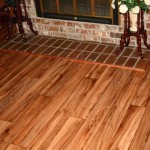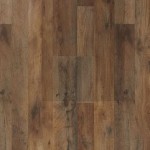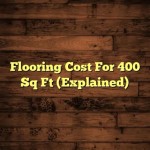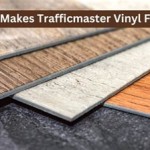Castle Combe Engineered Flooring Reviews: A Comprehensive Overview
Castle Combe engineered flooring is a popular choice among homeowners and interior designers alike, renowned for its aesthetic appeal and perceived durability. Understanding the nuances of this flooring option requires a thorough examination of its construction, materials, installation, maintenance, and user experiences as reflected in various reviews. This article aims to provide a comprehensive overview of Castle Combe engineered flooring, addressing common queries and concerns to facilitate informed decision-making.
Engineered flooring, in general, differs significantly from solid hardwood. Solid hardwood is a single piece of wood milled from a tree. Engineered flooring, on the other hand, comprises multiple layers bonded together. Typically, a thin veneer of hardwood is affixed to a core of plywood, high-density fiberboard (HDF), or other composite materials. This layered construction offers several advantages, including increased dimensional stability and resistance to warping or cupping, making it suitable for a wider range of environments, including those with fluctuating humidity levels.
Castle Combe, as a brand, emphasizes the visual characteristics of its products, focusing on creating flooring that mimics the look and feel of aged, reclaimed wood. This aesthetic is achieved through various techniques, including hand-scraping, wire-brushing, and staining processes that impart unique textures and color variations to each plank. The brand often features wider planks and longer lengths, contributing to a more spacious and luxurious feel in the installed environment. However, the aesthetic appeal is only one facet of the flooring's overall value proposition. Other factors, such as durability, ease of installation, and long-term maintenance, also play a significant role in determining its suitability for a particular application.
Key Feature: Aesthetic Versatility and Design Options
One of the most frequently cited advantages of Castle Combe engineered flooring is its extensive range of styles and finishes. The brand offers a wide array of wood species, including oak, hickory, maple, and walnut, each with its distinctive grain patterns and natural color variations. This selection allows homeowners to choose a flooring style that complements their existing décor and architectural style. Furthermore, Castle Combe employs various surface treatments to enhance the visual appeal of its flooring. These treatments include hand-scraping, which creates subtle undulations and imperfections that mimic the look of antique wood; wire-brushing, which accentuates the wood's natural grain; and staining, which allows for a wide range of color options, from light and airy to dark and dramatic.
The wider planks and longer lengths characteristic of many Castle Combe collections contribute significantly to the overall aesthetic. These larger dimensions minimize the number of seams in the flooring, creating a more cohesive and visually expansive surface. This is particularly beneficial in larger rooms, where narrower planks can appear busy and fragmented. The longer lengths also reduce the amount of waste during installation, as there are fewer short pieces to discard. The combination of diverse wood species, surface treatments, and plank dimensions provides homeowners with a high degree of design flexibility, allowing them to create a unique and personalized flooring solution.
Moreover, Castle Combe often incorporates subtle distressing and antiquing techniques to further enhance the rustic and reclaimed look of its flooring. These techniques involve adding small imperfections, such as knots, checks, and variations in color and texture, to create a sense of age and character. While some homeowners appreciate this rustic aesthetic, others may prefer a more uniform and contemporary look. Therefore, it is essential to carefully consider the specific design characteristics of each Castle Combe collection before making a purchase.
Durability and Performance of the Hardwood Veneer
The durability of engineered flooring is primarily determined by the thickness and quality of the hardwood veneer, along with the stability of the core material. A thicker veneer generally provides greater resistance to wear and tear, allowing for multiple refinishing cycles if necessary. A thinner veneer, on the other hand, may be more susceptible to scratches, dents, and fading over time. Castle Combe typically uses veneers that range in thickness, and the specific thickness should be verified before purchase, as it significantly impacts the floor's long-term performance.
The hardness of the wood species also plays a crucial role in determining the floor's resistance to denting and scratching. The Janka hardness scale is a standard measure of wood hardness, with higher numbers indicating greater resistance. Oak and hickory are popular choices for engineered flooring due to their relatively high Janka ratings. Softer woods, such as pine, may be more prone to damage, although they can still be suitable for lower-traffic areas. The finish applied to the hardwood veneer also contributes to its durability. High-quality finishes provide a protective layer that resists scratches, stains, and fading. Castle Combe utilizes various finishing techniques, including multi-coat polyurethane finishes, which are known for their durability and ease of maintenance. However, the specific type and quality of the finish can vary between collections, so it is essential to inquire about the finish specifications before making a purchase.
The core material of engineered flooring also contributes to its overall stability and resistance to moisture. Plywood cores are generally considered to be more stable and moisture-resistant than HDF cores. High-density fiberboard (HDF) is susceptible to swelling and warping if exposed to excessive moisture. Therefore, it is essential to choose engineered flooring with a core material that is appropriate for the intended application. In areas with high humidity or potential for moisture exposure, such as bathrooms or kitchens, a plywood core is generally recommended. Unfortunately, the specific core material used in Castle Combe flooring can vary by collection, and this information can be challenging to find, requiring direct inquiry with the manufacturer or retailer.
Installation and Maintenance Considerations
The installation of Castle Combe engineered flooring can be accomplished through several methods, including glue-down, nail-down, and floating installations. The choice of installation method depends on various factors, such as the type of subfloor, the size and shape of the room, and personal preferences. A glue-down installation provides the most stable and permanent bond between the flooring and the subfloor, minimizing movement and noise. However, it is also the most time-consuming and labor-intensive installation method. Nail-down installations are typically used over wooden subfloors and provide a secure and stable bond. Floating installations are the easiest and fastest method, as the planks are simply interlocked and laid over a thin underlayment. However, floating installations may be more prone to movement and noise than glue-down or nail-down installations.
Regardless of the installation method, it is essential to ensure that the subfloor is clean, level, and dry before installing Castle Combe engineered flooring. Any imperfections in the subfloor can telegraph through the flooring, creating uneven surfaces and potential damage. It is also important to acclimate the flooring to the room's temperature and humidity for several days before installation. This allows the flooring to expand or contract, minimizing the risk of gaps or buckling after installation.
Maintenance of Castle Combe engineered flooring is relatively straightforward. Regular sweeping or vacuuming is sufficient to remove dirt and debris. Occasional damp mopping with a pH-neutral cleaner is recommended to remove stains and spills. It is important to avoid using excessive water, as this can damage the flooring. Harsh cleaning chemicals and abrasive scrubbers should also be avoided, as they can scratch or dull the finish. Area rugs can be used in high-traffic areas to protect the flooring from wear and tear. With proper care and maintenance, Castle Combe engineered flooring can provide years of beauty and performance.
Ultimately, determining the suitability of Castle Combe engineered flooring rests on a thorough assessment of individual needs and priorities. While aesthetic appeal is a significant draw, careful consideration of durability, installation requirements, and maintenance demands is crucial for long-term satisfaction. Thorough research and comparison with other flooring options are recommended to make an informed decision.

Castle Combe Hardwood Flooring Review Floors Carpet And More

Castle Combe Wood Flooring

Castle Combe Grande Clarendon Hardwood 7013bp902 By Usfloors Floorings

Castle Combe Hardwood Flooring Review Floors Carpet And More

Castle Combe Artisans Elizabeth St Hardwood 7013ma106 By Usfloors Floorings

Castle Combe Originals Sodbury Hardwood 7013bp05 By Usfloors Floorings

Beaulieu Castle Combe Hardwood Flooring Burnaby Vancouver Bc Installation

Beaulieu Castle Combe Hardwood Flooring Burnaby Vancouver Bc Installation

Castle Combe Artisans Warehouse Carpets

Us Floors Castle Combe 7 1 2 X 5 8 Engineered White Oak Malmesbury Premium 31 11 Sq Ft Ctn
Related Posts








